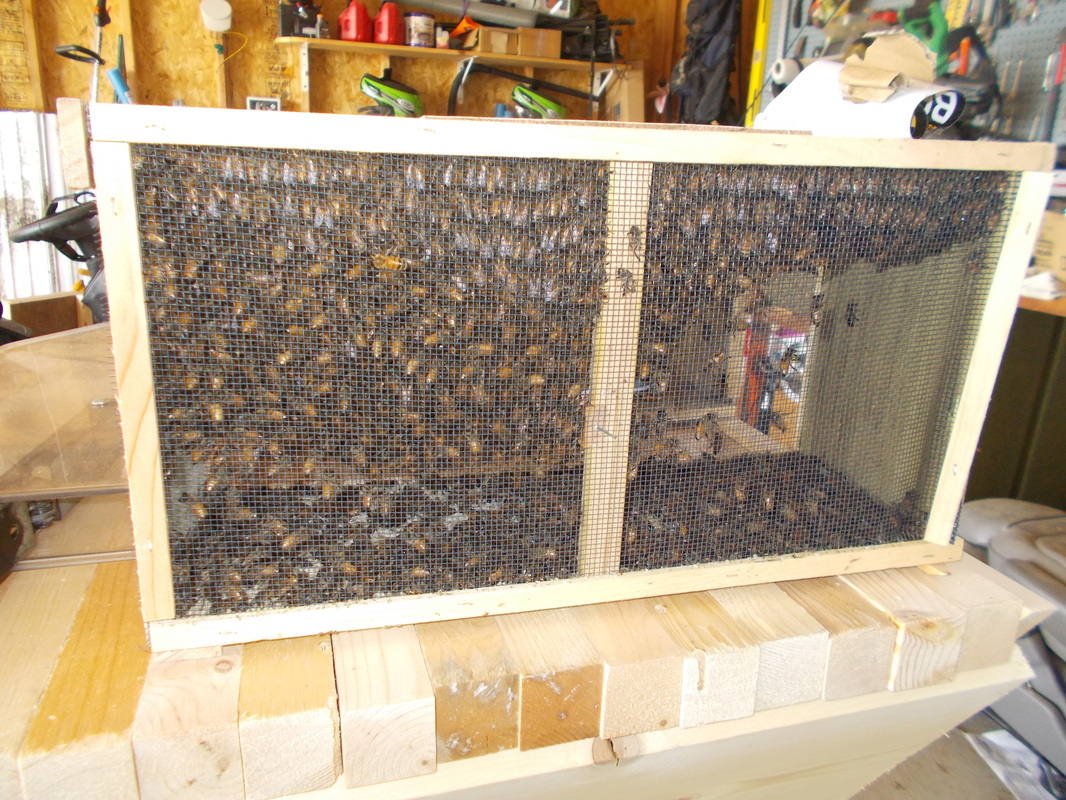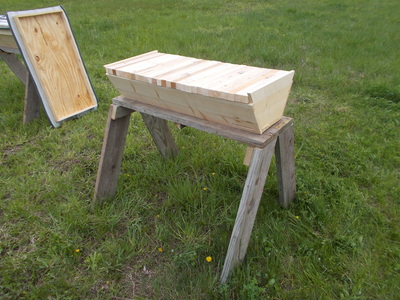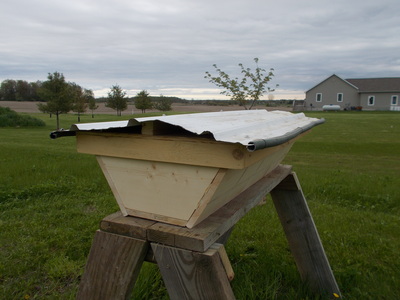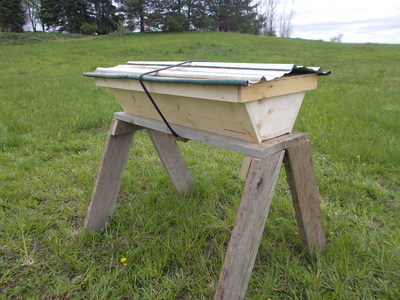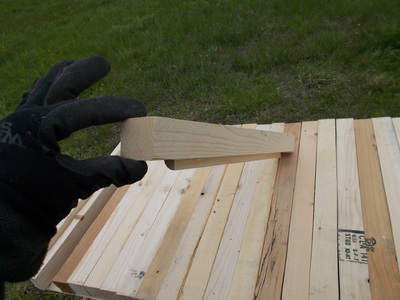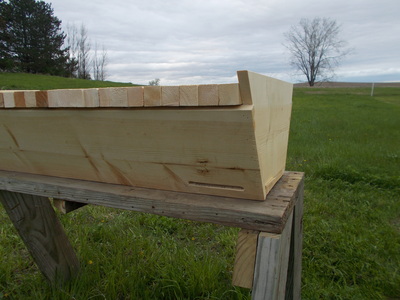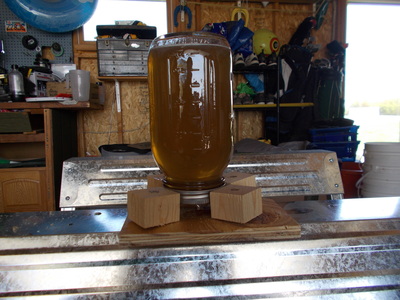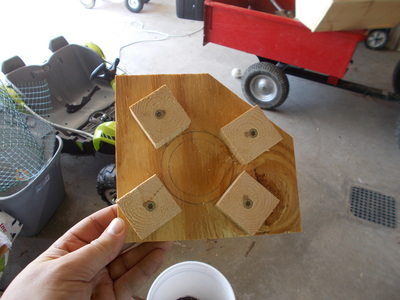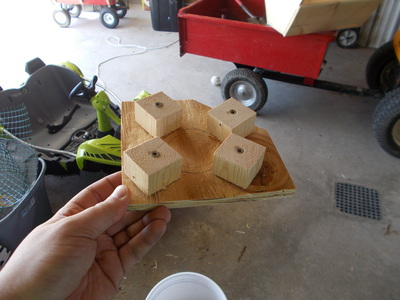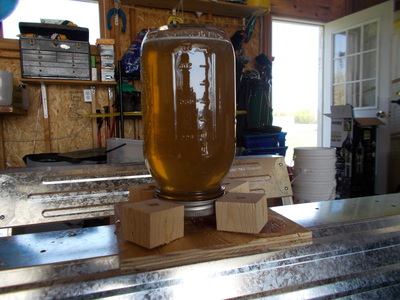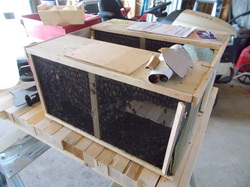
Our bees arrived! On May 19th our 20,000 new residents arrived to the Post Office. Numbers looked good as there were less than an inch of dead bees on the bottom of the boxes, meaning they made it well. Some death is expected due to short life cycles of bees. Our plan was to keep them in the garage and place them in the hives at the end of the day to help ensure that they will stay in their new homes, as opposed to swarming off.
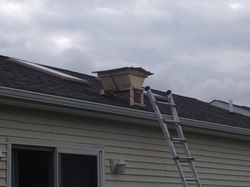
Note, we did place a trap hive on the roof of the house just in case they decided to leave and provide another place for them to go on the property. Like I said, this was the plan.
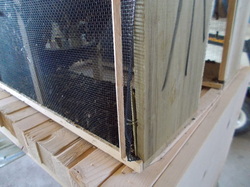
Shipping led to a small opening on the one hive that became apparent in the car with three escapees. Considering this, we still decided to wait until the afternoon, but walking into the garage midday changed our mind. The increasing temperature increased their activity and hundreds of bees were loose, so it was go-time for putting them into the hive. Below are our top bar hives. My dad and I made them in the winter out of new pine boards for the frame and as much scrap wood as we could find for the top bars. In the one picture, you can see the quarter round that we attached to the bars as recommended in the book Top Bar Beekeping by Les Crowder. We think this was a good idea, as we will explain later. The tables were made about a month or so ago out of old raised bed gardening boxes. Once we switched from treated to untreated wood, some of these boxes became obsolete. So I repurposed them into a beehive table. Notice the bungee cord wrapped around, which holds on the lid and holds the hive to the table.
I also made some sugar water feeders to place in the hives initially to provide a food source. Just using some scraps I screwed some pieces of the same width on a scrap piece of plywood and just far enough apart to hold an upside-down mason jar. Picture shows a quart jar, but that was too big and was replaced with a pint jar in each hive. I just punched a few holes in the lid so the bees had access. Sugar water was 1-to-1 sugar and water and we filled them up again after two weeks. After four weeks, we will remove them from the hives.
The above video portrays us opening the second shipment box of bees, taking out the metal sugar water can, removing the queen cage and taking out the cork holding the queen inside. Had I done this correctly, there would have been some "candy" there between the bees and the queen to help get them acclimated to each other. However, unbeknownst to me the queen cage had two ends so I just threw her to the wolves. Thankfully, they were in shipment process for awhile so they already got acclimated to her, as evidenced by the status of our hives now. At least we hope, because we have still yet to find the queens, but the hives are doing well. After removing the cork I pinned the queen cage to one of the top bars.
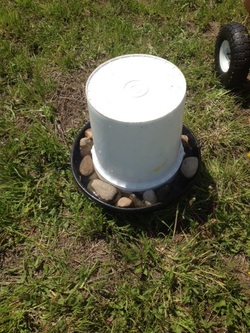
The second video shows us "bonking" the bees to the bottom of the hive and then literally pouring them into the open space. At this point, replace the top bars and roof and we were done. To the left is the bee waterer I made. Feed pan from TSC, bucket we used for getting maple syrup earlier in the year and rocks around it. Bees need water and we do not have standing water on our site, so the waterer was essential. We don't see them using it, but it's there if they need it. The rocks are to provide a standing spot for them to drink. Without a landing spot, the surface tension of the water could grab them and pull them in and drown them. Below is a video of the hive entrance after we put the lid on.
The above pics are shots from our first hive check after about 6-7 days and then a second check a week after that. The video below is during our first hive check. Very stoked to see the bees making A LOT of comb, looking good and going straight. This is the supposed benefit of the guides on the top bars with the quarter round and it looks like it works! The second hive check showed capped comb, which is very good. Not sure what they are capping yet as we are still novices, but we hope its brood - eggs and growing bee larvae.
- Trevor
- Trevor
